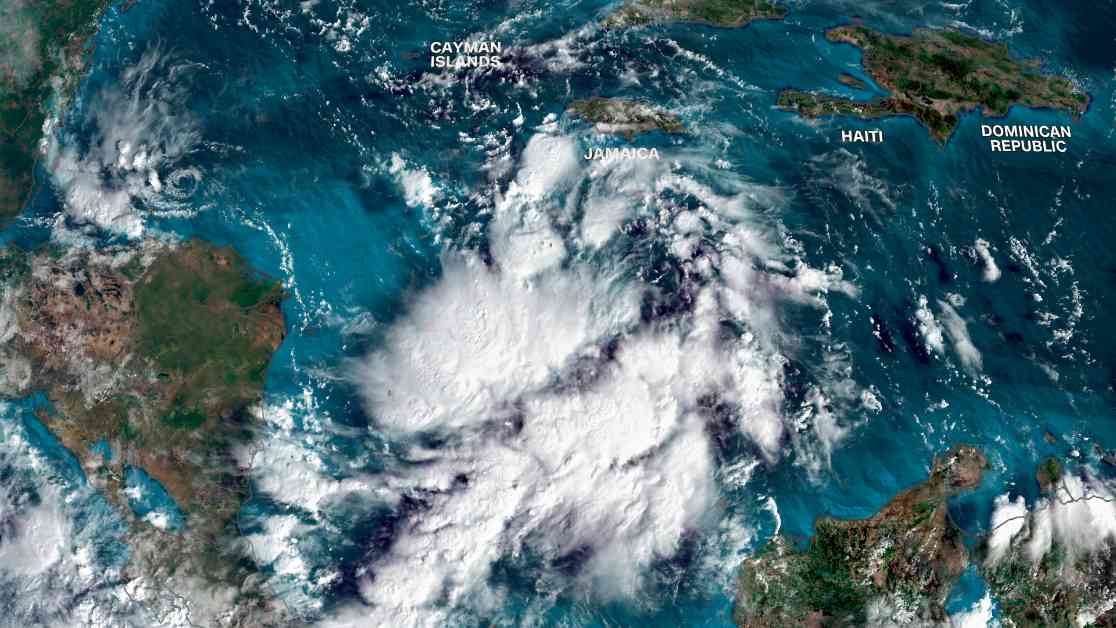Tropical Storm Sara is on the horizon, heading towards the Caribbean and potentially bringing dangerous conditions to Central America. The National Hurricane Center is advising residents along the eastern Gulf Coast, including those in Florida, to stay updated on the storm’s progress as it could impact the US next week.
Currently classified as Tropical Depression Nineteen with maximum sustained winds of 35 mph, Sara is located east of the Honduras/Nicaragua border in the Caribbean Sea. The storm is expected to gain strength as it lingers over the warm waters of the western Caribbean, posing a threat to Honduras and Nicaragua with heavy rainfall and potential flooding.
After affecting Central America, Sara may move towards Belize and the Yucatán Peninsula, bringing storm surge and strong winds. The exact path of the storm beyond this weekend remains uncertain, with various scenarios on the table depending on how close it gets to the coast of Honduras.
If Sara stays over warm waters, it could intensify rapidly and pose a greater threat to Central America and potentially the eastern Gulf of Mexico, including Florida. The Gulf’s unusually warm temperatures could further fuel the storm, making it a formidable force to reckon with.
While forecast models are still evolving, it’s important for residents in the potential impact areas to stay vigilant and prepared for any developments. The 2024 hurricane season has already seen five hurricanes make landfall on the US Gulf Coast, underscoring the need for readiness and caution.
As we approach the end of the official hurricane season on November 30, it’s crucial to remember that storms can still form in December. Climate change is also playing a role in the intensity of these storms, with warmer waters contributing to their strength and rapid growth.
In conclusion, keeping a close eye on Tropical Storm Sara and heeding the advice of the National Hurricane Center is essential for ensuring the safety of those in the storm’s path. By staying informed and prepared, we can better navigate the challenges posed by these unpredictable weather events.


